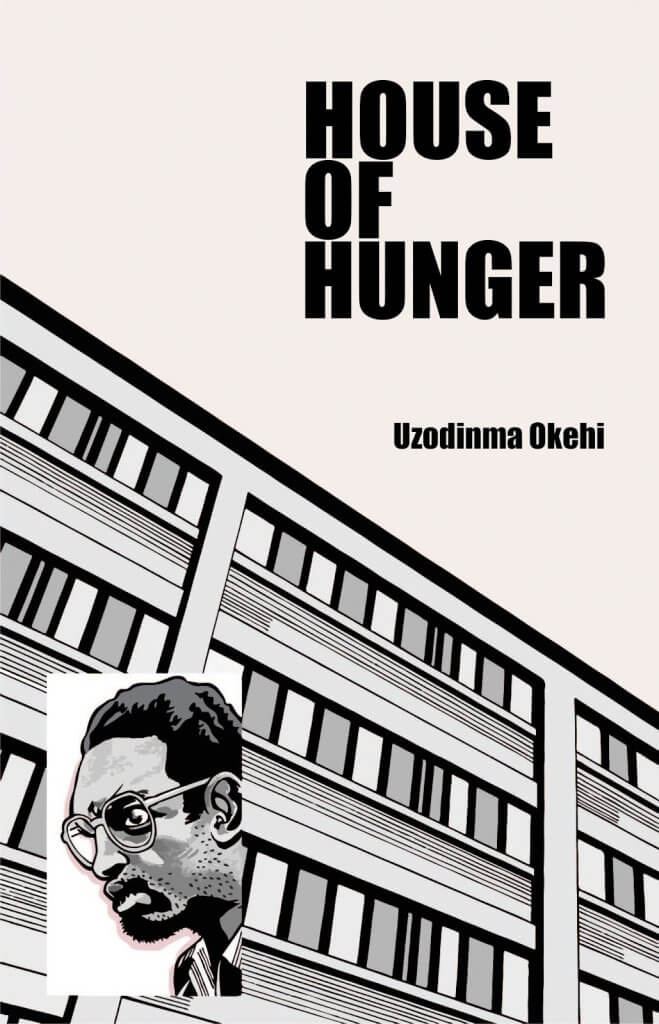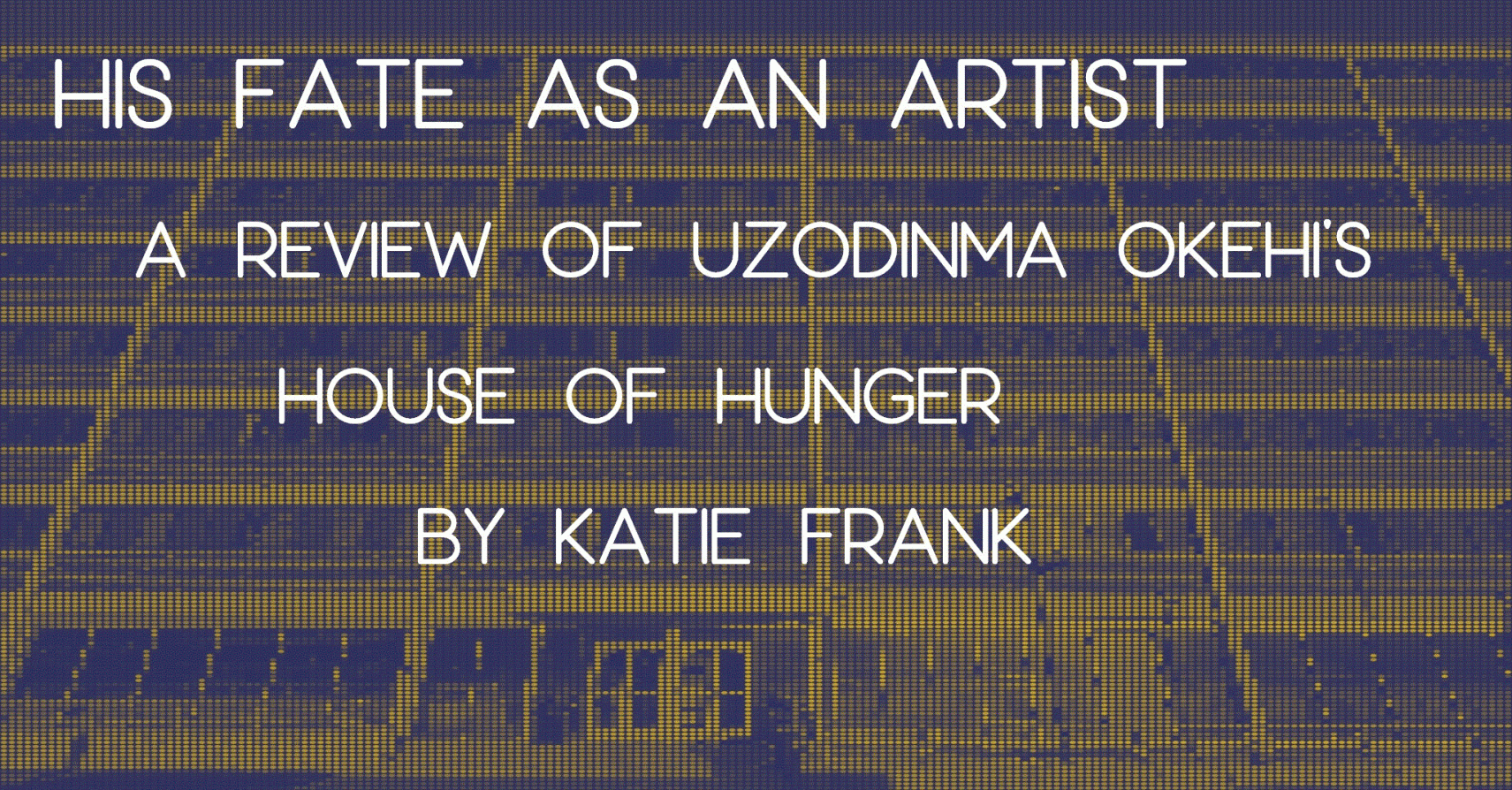 Uzodinma Okehi’s House of Hunger winks at the audience from the copyright page, which reads: “All characters, likenesses and incidents described within are probably, certainly coincidences, right(?), unless notably not.” This offers a clue that the author is a practitioner of autofiction: the spiritual tradition—excuse me, I mean, the genre—in which the author’s life is woven with artifice. It opens up the author to accusations of a lack of imagination, a sociopathic willingness to sacrifice the privacy of the people in their life, and assumptions that to whatever degree the narrator is an asshole, so is the author. Personally, I love autofiction that declares itself as such. It makes me feel like I’m in someone’s mind; there’s a sense of intimacy with the author, a glimpse into their own psychology, as opposed to the feeling that an author is trying to tell me something about the World through a story (which can be fun too, but old-fashioned.) I find that autofiction writers—willing as they are to revisit their own memories over and over, to build using their own disappointments, humiliations, hopes and dreams—tend to have great senses of humor, because without one they’d be too horrified to tell the truth.
Uzodinma Okehi’s House of Hunger winks at the audience from the copyright page, which reads: “All characters, likenesses and incidents described within are probably, certainly coincidences, right(?), unless notably not.” This offers a clue that the author is a practitioner of autofiction: the spiritual tradition—excuse me, I mean, the genre—in which the author’s life is woven with artifice. It opens up the author to accusations of a lack of imagination, a sociopathic willingness to sacrifice the privacy of the people in their life, and assumptions that to whatever degree the narrator is an asshole, so is the author. Personally, I love autofiction that declares itself as such. It makes me feel like I’m in someone’s mind; there’s a sense of intimacy with the author, a glimpse into their own psychology, as opposed to the feeling that an author is trying to tell me something about the World through a story (which can be fun too, but old-fashioned.) I find that autofiction writers—willing as they are to revisit their own memories over and over, to build using their own disappointments, humiliations, hopes and dreams—tend to have great senses of humor, because without one they’d be too horrified to tell the truth.
Okehi’s spare book, described on his website as a zine/novella, could also be framed as poetry. Even though it builds a narrative and reads as one, its chapters also curl in on themselves and have a rhythm like poems do. The story, which begins in December of 1994 in Iowa City, has the quality of being loosely strung together from memories. You can feel Okehi sitting at his desk (or wherever he writes), conjuring vague images in his mind. These images become portals through which he draws us with him into the past.
There is an economy with which he evokes the particular yearning, dreaming, blue-balled quality of being a college sophomore. “White girls throwing snowballs, frolicking. White girls in the pedmall, laughing their heads off, lighting each other’s cigarettes. White girls with huge, open mouths, chicklet teeth . . .” Subtle humor permeates the book, as Okehi’s narrator, Anelechuku (Anelly) Okoye (who later names himself “Blue“) trains his investigative eye on questions he can’t solve, having not yet discovered art as an outlet for that drive. A classmate describes the dreamlike reality of a girl walking into his room at a frat house, sitting on his bed, and hooking up with him without a word of negotiation required. Anelly bemoans the “details he won’t mention, that I know are gonna claw at me for the rest of the week.” He asks himself question after question about how the girl ended up in the guy’s room, if it was something “she’d fantasized about, maybe with friends, built herself up to, or was she some sort of sexual nihilist?” His hunger for information is trained toward his hope for sexual fulfillment, which is repeatedly dashed—such experience being perhaps the real young person’s artistic training, more so than anything learned in college.
Each chapter repeats the title House of Hunger; each chapter snapshots the narrator and his friends in the pursuit of some obsession, some concept of freedom. For Anelly, it’s maybe getting laid, but for his buddy, it’s telling off some girl who’s leading him on. In other words, letting go, freeing himself. Alongside the sexual frustration is the hilariously relatable theme of the ambitious artistic project that never gets completed—in Anelly and his friend Abdul’s case, “The Movie.” He describes drawing the storyboard for the movie, no script needed: “All the drawing. Because of the number one thing me and Abdul had agreed on; non-stop action.” A movie they may never make, which features non-stop action. Hint hint.
In moments, Anelly’s yearning takes a wider view, desperate for understanding as much as for pussy, and his criticism of the futility of college becomes a symbol for life as a whole: “I don’t know who to blame. The way the hallways and these spare, grey rooms seem themselves to respirate and thrive off thwarted dreams.” (And his residence hall is called the Mayflower.) The melodramatic feelings felt by young people are echoed in quieter formations throughout our lives, you could say, and Okehi nods to this repetition, this sort of timelessness, when he inserts a comic book-style “episode guide” late in the book. This “guide” details in little snippets future adventures that Anelly/Blue will have, published elsewhere in lit-mags and zines, (mostly collected in his 2015 book Over For Rockwell), such as the so-titled: “Episode 12, Thousand Shining Kindness: The humor and drudgery of Blue’s life working in bookstores.”
At one point Anelly begs a friend for more and more details about a mile-long escalator in Hong Kong, frustrated that it takes so much prodding to get any information out of him: “If it even makes sense to fantasize about an escalator.” The way he fixates on the escalator seems like another clue to his fate as an artist, his dissatisfaction with his friend’s vague elaborations a sign that he will eventually be led to art through books, where people share more details about things than anyone ever asked for.
The early Nineties setting of Hunger lends itself perfectly to the overall zine/comic book aesthetic, with its cut and paste layout reprinted as a pocket-sized paperback and its short, punk song-style chapters. Phones ring, “jumping off the hook,” Iowa City is rendered as gritty and grey-toned, and when Abdul gets deep, deep into the recently released Nintendo 64, Okehi narrates the strangeness, the insanity of console video games through Anelly watching Abdul play: “From all directions this time, the big cannonball heads, grinning, teeth, this time hungry, now diving at him, barking like dogs, snapping against their chains. Star behind the gate, gotta get that. Back up the mountain.” If House of Hunger is Okehi’s origin story as an artist, maybe it’s also Abdul’s as a future incel? (Just speculating, Abdul, if you’re out there.) Okehi writes: “He’s already gone, an addict, barefoot, with the controller, lost in a trance.”
And then there’s the guy outside the Mayflower residence hall, standing around, drinking from a big plastic cup of soda, through various scenes, always just standing there. In art as in life. What’s his deal?

